+Search query
-Structure paper
| Title | Allosteric communication between DNA-binding and light-responsive domains of diatom class I aureochromes. |
|---|---|
| Journal, issue, pages | Nucleic Acids Res, Vol. 44, Issue 12, Page 5957-5970, Year 2016 |
| Publish date | Jul 8, 2016 |
 Authors Authors | Ankan Banerjee / Elena Herman / Manuel Serif / Manuel Maestre-Reyna / Sebastian Hepp / Richard Pokorny / Peter G Kroth / Lars-Oliver Essen / Tilman Kottke /   |
| PubMed Abstract | The modular architecture of aureochrome blue light receptors, found in several algal groups including diatoms, is unique by having the LOV-type photoreceptor domain fused to the C-terminus of its ...The modular architecture of aureochrome blue light receptors, found in several algal groups including diatoms, is unique by having the LOV-type photoreceptor domain fused to the C-terminus of its putative effector, an N-terminal DNA-binding bZIP module. The structural and functional understanding of aureochromes' light-dependent signaling mechanism is limited, despite their promise as an optogenetic tool. We show that class I aureochromes 1a and 1c from the diatom Phaeodactylum tricornutum are regulated in a light-independent circadian rhythm. These aureochromes are capable to form functional homo- and heterodimers, which recognize the ACGT core sequence within the canonical 'aureo box', TGACGT, in a light-independent manner. The bZIP domain holds a more folded and less flexible but extended conformation in the duplex DNA-bound state. FT-IR spectroscopy in the absence and the presence of DNA shows light-dependent helix unfolding in the LOV domain, which leads to conformational changes in the bZIP region. The solution structure of DNA bound to aureochrome points to a tilted orientation that was further validated by molecular dynamics simulations. We propose that aureochrome signaling relies on an allosteric pathway from LOV to bZIP that results in conformational changes near the bZIP-DNA interface without major effects on the binding affinity. |
 External links External links |  Nucleic Acids Res / Nucleic Acids Res /  PubMed:27179025 / PubMed:27179025 /  PubMed Central PubMed Central |
| Methods | SAS (X-ray synchrotron) |
| Structure data | 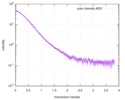 SASDB24: Aureochrome 1a bZIP-LOV module: PtAUREO1a bZIP-LOV (Light oxygen voltage) module (light state, Tris) 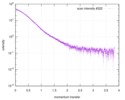 SASDB34: Aureochrome 1a bZIP-LOV module: PtAUREO1a bZIP-LOV (Light oxygen voltage) module (dark state, Tris) 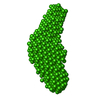 SASDBX3: 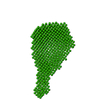 SASDBY3: 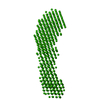 SASDBZ3: |
| Source |
|
 Movie
Movie Controller
Controller Structure viewers
Structure viewers About Yorodumi Papers
About Yorodumi Papers




